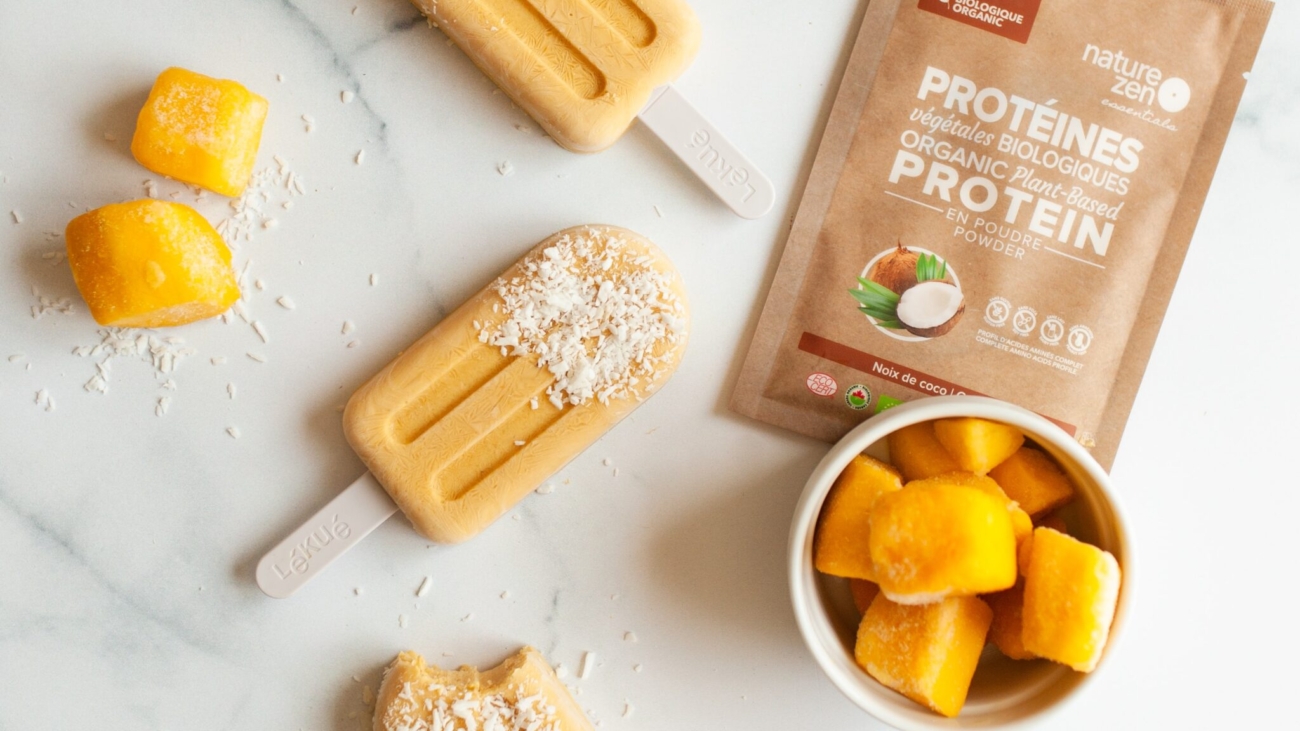As more and more of us move towards a plant-based lifestyle, it can be hard to find the best sources of protein that are healthy and delicious. Finding the right plant-based proteins isn’t always easy, which is why we’ve put together this guide to help you select the healthiest and most satisfying options! Learn all about how different beans, nuts, grains and soy products can provide you with the perfect source of protein for any lifestyle.
Introduction to Plant-Based Proteins
A protein is a macronutrient that is essential to the human body. It helps build and repair tissue, produce hormones, and support the immune system. The majority of people get the majority of their protein from animal sources, such as meat, poultry, fish, and dairy. However, there are many plant-based protein sources that are also excellent sources of this nutrient. Beans and legumes are a great source of plant-based protein. They are also high in fiber and low in fat. Some examples of beans and legumes that are good sources of protein include lentils, black beans, kidney beans, chickpeas, peanuts, and soybeans. Soybeans are a type of bean that is especially high in protein. Tofu, tempeh, and edamame are all made from soybeans and are excellent sources of plant-based protein. Soy milk is also a good source of this nutrient. Nuts and seeds are another good source of plant-based proteins. They are also a good source of healthy fats, vitamins, minerals, and antioxidants. Some examples of nuts and seeds that contain protein include almonds, walnuts, pistachios, pumpkin seeds, sunflower seeds, and flaxseeds. Grains can also be a good source of plant-based proteins. Quinoa is one grain that is especially high in protein. Other grains that contain some amount of protein include oats, wheat germ
What Are The Benefits of Plant-Based Protein?
There are plenty of reasons to consider adding plant-based protein sources to your diet. Here are some of the benefits:
1. Plant-based proteins are typically lower in calories than animal-based proteins.
2. They are also generally lower in fat, especially saturated fats.
3. Plant-based proteins tend to be rich in fiber, which can promote weight loss and a healthy digestive system.
4. These proteins are often a good source of vitamins and minerals, including iron, zinc, and magnesium.
5. Many plant-based proteins are complete proteins, meaning they contain all the essential amino acids your body needs to function properly.
Different Plant-Based Protein Sources
There are many different types of plant-based protein sources, each with their own unique nutrient profiles. Here is a rundown of some of the most popular options:
Beans: Beans are a great source of plant-based protein, as well as fiber and other nutrients. They can be eaten on their own, or added to soups, salads, and other dishes.
Lentils: Lentils are another good source of plant-based protein, fiber, and other nutrients. Like beans, they can be eaten on their own or added to soups, salads, and other dishes.
Chickpeas: Chickpeas are a good source of plant-based protein and fiber. They can be eaten on their own or added to salads, soups, and other dishes.
Soybeans: Soybeans are a good source of plant-based protein and fiber. They can be eaten on their own or added to soups, salads, and other dishes.
Tofu and tempeh are also made from soybeans and are excellent sources of plant-based protein.
Nuts & Seeds: Nuts and seeds are good sources of plant-based protein, as well as healthy fats. They make a great snack on their own or can be added to breakfast cereals, granola bars, desserts, etc.
– Legumes
When it comes to plant-based protein, legumes are one of the best sources. Not only are they packed with protein, but they also contain fiber, which is important for a healthy diet. There are many different types of legumes, so you can choose the ones that best fit your needs. Some of the most popular legumes include: Beans: Beans are a great source of protein and fiber. They come in many different varieties, such as black beans, kidney beans, and pinto beans. You can add beans to salads, soups, stews, and more. Chickpeas: Chickpeas are another good source of protein and fiber. They can be used in dishes like hummus and falafel. You can also add them to salads or use them as a replacement for meat in recipes. Edamame: Edamame are soybeans that are typically eaten when they’re young and tender. They’re a good source of protein and make a great snack. You can find them frozen or fresh at most grocery stores. Lentils: Lentils are a type of bean that is high in protein and fiber. They come in many different colors, including red, green, and brown lentils. You can use them in soups, stews, or make a lentil loaf as a vegan alternative to meatloaf. Peanuts: Peanuts are not
– Beans
Beans are often touted as a great source of plant-based protein, and for good reason. They’re packed with nutrients, including fiber, iron, magnesium, and potassium. And they’re relatively low in calories and fat. But not all beans are created equal when it comes to protein content. For example, a cup of cooked black beans has about 15 grams of protein, while the same amount of cooked lentils has 18 grams. And then there are soybeans. These little powerhouse legumes pack a whopping 28 grams of protein per cup! So if you’re looking for a high-protein plant-based food, soybeans are a great option. There are many different ways to enjoy soybeans. You can buy them whole (edamame), or in various forms such as tofu, tempeh, or miso paste. You can also find soy milk, cheese, and yogurt at most grocery stores.
– Lentils
Lentils are an excellent source of plant-based protein, providing 18 grams of protein per cup. They are also a good source of fiber and contain iron, folate, and other important nutrients. Lentils can be cooked in a variety of ways and added to soups, stews, salads, and other dishes.
– Peas
There are many plant-based protein sources to choose from, but peas are one of the best. Peas are a good source of protein, fiber, and vitamins, and they can be easily added to a variety of dishes. One cup of cooked peas contains about 8 grams of protein, which is comparable to the amount of protein in one egg. Peas are also a good source of iron and magnesium.
– Nuts & Seeds
Nuts and seeds are a great source of plant-based protein. They are also a good source of healthy fats, fiber, and vitamins and minerals. Here are some tips on how to choose the best and healthiest nuts and seeds: – Look for nuts and seeds that are raw or minimally processed. – Avoid nuts and seeds that are roasted or salted. – Choose nuts and seeds that are organic, if possible. – Store nuts and seeds in a cool, dry place. – If you have trouble digesting nuts and seeds, try soaking them overnight before eating them.
– Grains
If you’re looking for a plant-based protein source that’s versatile and easy to find, then grains are a great option. There are many different types of grains to choose from, including wheat, rice, quinoa, and oats. Each type of grain has its own unique nutrient profile, so be sure to choose the one that best suits your needs. When it comes to protein content, most grains fall somewhere in the middle range. For example, a cup of cooked quinoa contains 8 grams of protein while a cup of cooked brown rice has 5 grams. This means that you’ll need to eat a good amount of grains to reach your daily protein needs if you’re following a plant-based diet. Fortunately, grains are very filling and can be easily incorporated into many different meals. Try adding them to soups, stews, salads, or veggie bowls. You can also use them as a base for veggie burgers or meatless meatballs. And if you’re looking for a quick and easy snack, simply cook up some rice or quinoa ahead of time and store it in the fridge for later.
– Quinoa
A lot of people think that quinoa is a grain, but it’s actually a seed! It’s a complete protein, meaning it has all the essential amino acids your body needs. Quinoa is also high in fiber and magnesium, and it’s gluten-free.
– Rice
When it comes to plant-based protein sources, rice is a great option. It’s a complete protein, meaning it contains all the essential amino acids your body needs, and it’s also low in fat and calories. Plus, rice is easy to cook and can be used in a variety of dishes. There are two main types of rice: brown rice and white rice. Brown rice is more nutrient-dense than white rice, but both types offer health benefits. Brown rice has more fiber, which can help with digestion, and it also has more vitamins and minerals. White rice is lower in calories and easier to digest. When shopping for rice, look for brands that are organic and non-GMO. You can findrice at most grocery stores or online.
– Soy Products
Soy products are a great source of plant-based protein. soybeans are a complete protein, meaning they contain all the essential amino acids your body needs. Soy products are also low in saturated fat and cholesterol and are a good source of fiber, iron, and calcium. Some common soy products include tofu, tempeh, soy milk, soy flour, and soy sauce. Tofu is made from soybean curds that have been pressed into blocks. Tempeh is made from fermented soybeans and has a firmer texture than tofu. Soy milk is a liquid made from ground soybeans that can be used as a dairy-free alternative in recipes or enjoyed on its own. Soy flour is made from ground soybeans and can be used in baking or as a thickener for soups and sauces. Soy sauce is a salty condiment made from fermented soybeans and wheat that is often used in Asian cuisine. When choosing soy products, look for those that are minimally processed and free of additives. Also, be sure to check the ingredient label to make sure the product does not contain genetically modified organisms (GMOs).
– Other Vegetables & Fruits
When it comes to plant-based protein, there are a lot of options available. In addition to the more common choices like beans and soy, there are a variety of other vegetables and fruits that can provide you with the protein you need. Here are some of the best options to consider: lentils: these little legumes are packed with protein, providing around 18 grams per cup. They’re also a good source of fiber and iron, making them a nutrient-rich food choice. quinoa: this grain is becoming increasingly popular as a protein source, as it provides all the essential amino acids your body needs. One cup of cooked quinoa contains around 8 grams of protein. spinach: this leafy green is not only a good source of vitamins and minerals, but it also contains around 5 grams of protein per cup. chia seeds: these tiny seeds are full of nutrients, including protein. Just one ounce (28 grams) contains around 4 grams of protein. acorn squash: this winter squash is not only a good source of vitamin C and fiber, but it also provides 2 grams of protein per cup.
How Much Should I Eat?
There are a lot of variables to consider when it comes to how much protein you need in your diet, and the best way to determine that is by working with a Registered Dietitian Nutritionist (RDN). That said, the general consensus is that the average sedentary adult needs about 0.36 grams per pound of body weight – so if you weigh 150 pounds, you need 54 grams of protein per day. Just like with any nutrient, though, everyone’s needs differ slightly based on their activity level, age, muscle mass, and other factors. If you lead a more active lifestyle, you may need closer to 0.54-0.64 grams per pound of body weight – so if you weigh 150 pounds, you’d need 81-108 grams of protein each day. athletes or those looking to build muscle may need even more. The International Society of Sports Nutrition (ISSN) recommends 1.4-2.0 grams per kilogram of body weight for those engaged in moderate to high intensity exercise (so an 180-pound person would need approximately 100-145 grams per day). Figuring out how much protein you need can seem daunting, but luckily there are plenty of plant-based foods that pack in the protein!






